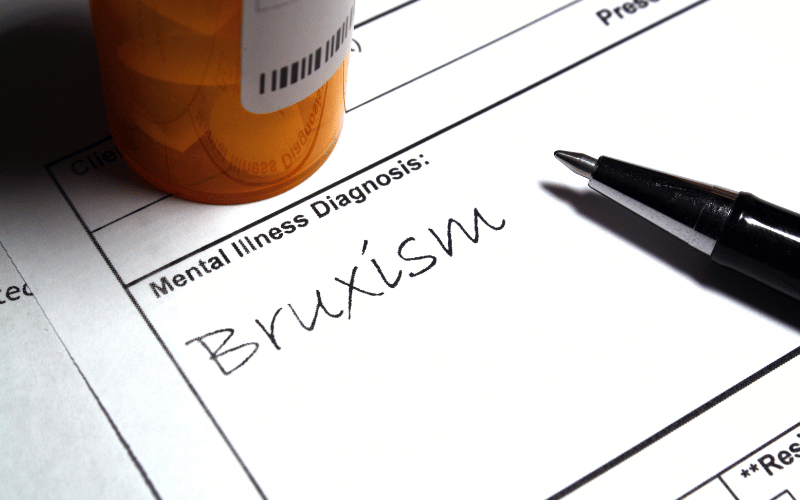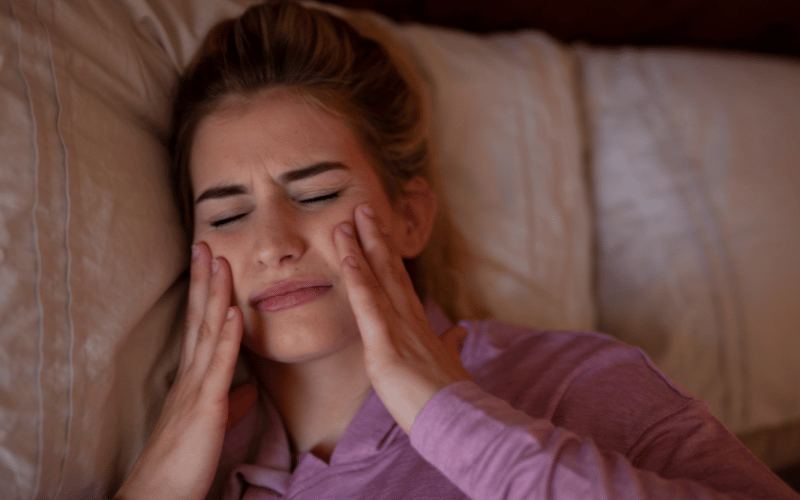Introduction: The Silent Nighttime Menace

When night falls and the world drifts into slumber, a phenomenon awakens in many – bruxism. This seemingly innocuous term hides behind it a world of dental mysteries and potential oral health problems. The involuntary grinding of teeth, often accompanied by the clenching of the jaw, might appear as just a bad habit. But it’s more complex and intertwined with our daily lives than we often realize.
Bruxism isn’t just the sound of teeth grinding against each other. It’s an echo of our stresses, a hint at potential sleep disorders, and even a potential sign of lifestyle issues. The condition, often dismissed as inconsequential, can actually be a window into one’s overall health and wellbeing. The mere act of grinding one’s teeth can be a gateway to understanding deeper health concerns ranging from mental well-being to physical health.
However, bruxism isn’t just a detective tool for health professionals. For the individual, it represents potential dental problems, disturbed sleep, and even chronic pain issues. It’s imperative that this condition isn’t taken lightly. Not just for the sake of one’s teeth, but for the broader implications it might have on one’s health and quality of life.
Let’s now embark on a journey to understand this condition more deeply, starting with 15 crucial facts that everyone should be aware of.
Fact 1: Bruxism Has Two Primary Types

Bruxism might seem straightforward, but beneath the surface, its complexities unfold. There are two clear distinctions in bruxism categories: awake bruxism and sleep bruxism. These classifications might sound self-explanatory, but understanding their subtle nuances is vital. Awake bruxism, as the name suggests, occurs when an individual is conscious. It could emerge during moments of heightened concentration, stress, or even frustration.
The emotional connection to awake bruxism is hard to overlook. Emotions like anxiety, anger, or tension can unknowingly spur someone into grinding their teeth. It’s a subconscious response, a silent scream of the mind trying to cope with overpowering sentiments. Unlike its counterpart, sleep bruxism is sneaky. It manifests in the depth of slumber, when the individual is most vulnerable and unaware.
Many believe that sleep bruxism is more of a reflex action than a conscious decision. The grinding here doesn’t necessarily stem from emotional triggers. Instead, it might correlate with other sleep-related activities, like talking or even swallowing. Those deep in their REM cycles, dreaming away, might unknowingly be grinding away too, completely oblivious to their nocturnal dental activity.
Though these types of bruxism are distinct, one might assume that suffering from one automatically means you’ll experience the other. Interestingly, this isn’t the case. An individual could be an awake bruxer without ever grinding their teeth at night, and vice versa. But recognizing these two forms is vital. While they might seem interlinked, their causes, effects, and treatment approaches can differ significantly.
The repercussions of each type also vary. While awake bruxers might not deal with intense dental wear, they might experience facial pain or even temporomandibular disorders (TMD). On the other hand, those with sleep bruxism might wake up with no memory of their grinding but will see its effects in the form of dental damage or heightened tooth sensitivity. (1)